| Share |  |
 | |||
Healthy Sweeteners - Part Three
Last month we looked at natural sweeteners, such as stevia, Xylitol, date sugar and organic dehydrated cane juice products, that can be used as alternatives to refined sugar. This month we consider sweeteners in liquid form that provide additional options to use in place of sugar for those occasions when a sweet taste is desired.
The amount of a liquid sweetener used in a recipe to take the place of sugar can vary according to the degree of its individual sweetness. The general rule of thumb is to substitute one half to three-fourths cup of the liquid sweetener for each cup of sugar the recipe calls for and to decrease other liquids in the recipe by one fourth for each three-fourths cup of liquid sweetener used. When using honey or maple syrup in a recipe, a further reduction of sugar can be achieved by reducing the sweetener by half and substituting unsweetened applesauce or mashed sweet potato in its place.
AGAVE NECTAR
Agave (pronounced ah-GAH-vay) nectar is a syrup-type liquid sweetener produced in Mexico from various species of agave plants that closely resemble cactus or yucca plants. The sap-like juice from the plant is squeezed from the core, filtered and heated to turn the carbohydrates into sugars. Though the amount can vary depending on the producer, approximately ninety percent of agave is a complex form of fructose called inulin, which is very different from the c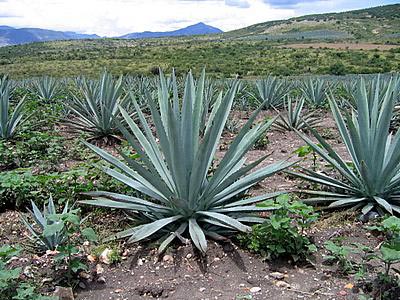 rystalline form of fructose refined primarily from corn. The remaining ten percent is in the form of glucose, giving agave a glycemic index lower than many other natural sweeteners. This makes it more advantageous to diabetics and those who want to avoid a rise in blood sugar levels.
rystalline form of fructose refined primarily from corn. The remaining ten percent is in the form of glucose, giving agave a glycemic index lower than many other natural sweeteners. This makes it more advantageous to diabetics and those who want to avoid a rise in blood sugar levels.
There are many varieties of agave nectar based on the different types of plants and preparation methods used. Lighter syrup is prepared with less heat and more filtration; hence it has a milder taste. It has a more neutral flavor that enhances rather than interferes with the taste of foods and beverages with which it is combined. The darker form of agave retains more of the plant’s minerals, has less filtration and a stronger taste, similar to that of maple syrup. Agave nectar that is processed at temperatures under 118Ëš is considered “raw” as the lower heat allows the enzymes to remain viable.
Agave nectar is thinner in consistency than honey, so it blends more easily with ingredients in a recipe and dissolves more readily in liquids. Since agave is sweeter than both sugar and honey, some sources recommend a quarter less of it be used than the amount of sweetener called for in the recipe. Also, when baking with agave, reduce the temperature of the oven by 25Ëš to avoid over browning.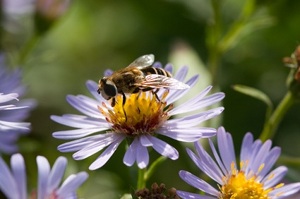 HONEY
HONEY
Honey is an extraction of flower nectar gathered by bees comprised of fructose and glucose containing various vitamins, minerals, amino acids and enzymes. Its antioxidant and antimicrobial properties are responsible for various therapeutic benefits it is known for such as soothing sore throats and improving digestion. Honey also helps reduce allergies by building up the body’s immunities to local allergens, a good reason to purchase locally-produced honey.
Although honey is a natural sweetener with many wonderful properties, it consists of simple sugars. This means that it can raise blood sugar levels and spike insulin just like refined sugar. Honey has the highest calorie content of all sugars, with 65 calories per tablespoon, compared to 48 calories per tablespoon found in table sugar. The increased calories can mean increased blood serum fatty acids in addition to weight gain and a greater risk of more cavities.
Commercial honey found in most grocery stores is usually clear, light in color and pasteurized to prevent crystallization and yeast formation. This process involves heating it over 150Ëš, which essentially destroys all of the nutrients and enzymes, leaving a product that is no better than refined sugar. For this reason, it is best to only purchase raw, unfiltered honey.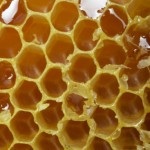 It needs to be organically produced, because pesticide residue from the source flowers could be highly concentrated in honey produced from this nectar. If you purchase raw, unfiltered honey and it does crystallize, all you have to do to dissolve the crystals is to set the container of honey in hot water.
It needs to be organically produced, because pesticide residue from the source flowers could be highly concentrated in honey produced from this nectar. If you purchase raw, unfiltered honey and it does crystallize, all you have to do to dissolve the crystals is to set the container of honey in hot water.
Children under one year of age should not consume any form of honey, because they lack sufficient stomach acid to deal effectively with spores that could develop into bacteria and cause infant botulism, a rare and serious form of food poisoning. Although honey is generally safe for adults to consume, it is wise to be cautious of honey imported from overseas due to regulatory standards not being as high in some countries as they are in the United States. This is an additional reason to purchase honey that is locally produced.
Since honey is also sweeter than sugar by volume, less is needed in baking or cooking. The most common conversion recommendation is to use one-half cup of honey for each cup of sugar in a recipe and to reduce the liquid in the recipe by one-fourth cup. If there is no liquid to reduce, three to four tablespoons of flour may be added for each half-cup of honey used. It is also advisable to use a quarter of a teaspoon of baking soda for each half-cup of honey used to reduce the acidity of the honey. Also, reduce the oven temperature by 25Ëš, as honey tends to brown more quickly. One real advantage to baking with honey is that its unique ability to absorb and retain moisture keeps baked goods moist and fresh for longer periods of time.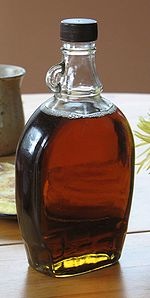 MAPLE SYRUP
MAPLE SYRUP
Pure maple syrup is a truly natural product consisting of a concentration of sap from sugar maple trees. It is not to be confused with pancake syrup from the grocery store, which consists primarily of corn syrup, HFCS, chemical additives and artificial flavoring. One reason it is so expensive is that it takes approximately 40 gallons of maple sap to boil down to make one gallon of syrup and the sap runs for only four to six weeks during the year. It is rich in potassium, calcium and iron and is particularly high in minerals, such as manganese and zinc (important in heart as well as immune health). The maple sap also contains compounds that act as antioxidants, protecting the body against oxidative damage common in many degenerative conditions.
Maple syrup is three times sweeter than cane sugar but has fewer calories than sugar or honey. It should be used very sparingly, however, because it can cause blood sugar levels to rise.  Maple syrup is classified by grade. Grade A maple syrup is further divided into light, medium and dark ambers with the lighter version having a more delicate flavor and the darker a more robust maple flavor. Grade B maple syrup is less refined with an even stronger taste, but it is the healthiest choice since it retains more of its nutrients. It is best to purchase certified organic maple syrup, because some producers compromise the purity of natural maple syrup by using illegal formaldehyde pellets and additives in their processing.
Maple syrup is classified by grade. Grade A maple syrup is further divided into light, medium and dark ambers with the lighter version having a more delicate flavor and the darker a more robust maple flavor. Grade B maple syrup is less refined with an even stronger taste, but it is the healthiest choice since it retains more of its nutrients. It is best to purchase certified organic maple syrup, because some producers compromise the purity of natural maple syrup by using illegal formaldehyde pellets and additives in their processing.
When using maple syrup in baking, substitute one half to two-thirds cup maple syrup for each cup of sugar and reduce the liquid in the recipe by three tablespoons. As with other liquid sweeteners, reduce the oven temperature by 25Ëš to avoid over browning.
MOLASSES
Molasses is the syrup that remains after the juice extracted from the sugar cane or sugar beet plant has been boiled. Sulphered molasses comes from unripe green sugar cane that is treated with sulphur dioxide fumes during the sugar extraction process to speed ripening. The other type of molasses, referred to as unsulphured, is derived from sugar cane that matures naturally for the full 15 months of the sugar cane’s growing season. Each of the three grades of molasses can be either sulphered or unsulfered. I would recommend avoiding all molasses that is sulfured, regardless of the grade. 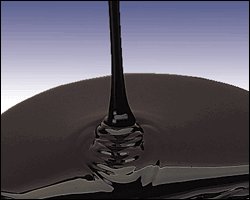 The first grade is known as “fancy” molasses, which is derived from the first boiling of the sugar cane juice. It is lighter and milder than the other types and contains the highest sugar content, since not as much sugar crystallization has formed at this point in the refining process. The second grade of molasses, created from the second boiling of the sugar cane juice, is sweeter and darker than “fancy” molasses. This grade of molasses, which is often referred to as “cooking” or “regular” molasses, has a stronger, more distinct taste that lends itself well in flavoring baked goods such as gingerbread and spice cookies.
The first grade is known as “fancy” molasses, which is derived from the first boiling of the sugar cane juice. It is lighter and milder than the other types and contains the highest sugar content, since not as much sugar crystallization has formed at this point in the refining process. The second grade of molasses, created from the second boiling of the sugar cane juice, is sweeter and darker than “fancy” molasses. This grade of molasses, which is often referred to as “cooking” or “regular” molasses, has a stronger, more distinct taste that lends itself well in flavoring baked goods such as gingerbread and spice cookies.
Blackstrap molasses is the liquid left after all sucrose crystals have been eliminated from the final boiling of the sugar cane juice. It is extremely dark and strong with a robust, somewhat bittersweet taste, unsuitable for many types of dessert recipes. It is less sweet than the other grades and has a lower glycemic index, though it still contains more than half sucrose.
However, unsulfered blackstrap molasses does have some health benefits in that it contains most of the original nutrients of the sugar cane. Since the roots of mature sugar cane grow deep enough to bypass much of the mineral deficient soil, blackstrap molasses can be quite rich in minerals such as iron (one tablespoon contains 4.5 grams), calcium, potassium and magnesium and trace minerals like copper and zinc. It also contains high amounts of manganese, a trace mineral beneficial to the nervous system and helpful in the synthesis of fatty acids and the stabilization of blood sugar levels. There are significant levels of other nutrients such as folate (a natural source of folic acid) and other B vitamins.
Many people use one or two teaspoons of blackstrap molasses dissolved in warm water daily as a mineral tonic. It can also be used in marinades, barbeque sauce, baked beans, on top of hot cereals or toast as well as in certain types of cookies, cakes and pies. As with honey and maple syrup, it is advisable to purchase organic molasses to avoid concentrations of pesticides.
GRAIN SYRUPS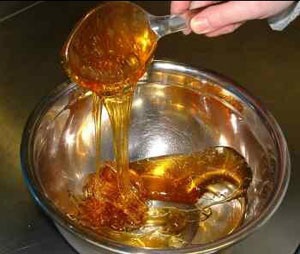
Brown rice syrup is a natural sweetener with a mild buttery flavor that provides a more subtle sweetness when used in cooking and baking. It is made from brown rice that has fermented through the action of special enzymes that work to convert the starch content of the rice to sugar. The mixture is then strained and cooked until it reaches the consistency of syrup.
The biggest health advantage to brown rice syrup is that it is comprised of roughly 50% complex carbohydrates. Its primary sweetness comes from maltose, which constitutes 42% of the sugar content. Since there is such a small percentage of glucose in brown rice syrup, its glycemic index rating is only 20, which makes it safer for diabetics than many sweeteners. 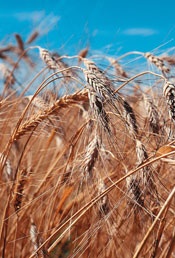 Because of its higher complex carbohydrate content, brown rice syrup is broken down and absorbed more slowly than simple sugars, which creates less of a rise in blood sugar levels. This slower breakdown also allows the body a greater source of sustained energy and prevents much of the sugar from being stored as fat.
Because of its higher complex carbohydrate content, brown rice syrup is broken down and absorbed more slowly than simple sugars, which creates less of a rise in blood sugar levels. This slower breakdown also allows the body a greater source of sustained energy and prevents much of the sugar from being stored as fat.
Barley malt is a dark, thick sweetener made from sprouted barley. The production of barley malt syrup involves soaking and sprouting barley to make malt, combining it with more barley and cooking the whole mixture until the starch is converted to sugar. The mixture is then strained and cooked even further until it becomes syrup. Barley malt syrup is comprised mainly of maltose with small amounts of fructose, sucrose and glucose. Its consistency and flavor is more similar to molasses though it may be used in a wider variety of recipes as its does not have as strong of a taste.
Both brown rice and barley malt syrups are half as sweet as sugar, so more may be needed in recipes to achieve the desired sweetness. It is recommended that one and a fourth cups of the syrup be used for each cup of sugar and that any liquid in the recipe be reduced by one-fourth cup. Using a quarter teaspoon of baking soda for each cup of these syrups used in a recipe will help to produce lighter baked goods.
FRUIT SWEETENERS
The advantage of using mashed fruit, fruit juice or fruit juice concentrates as natural sweeteners is that the primary sugar is fructose, which does not require insulin for its metabolism. Consequently, it does not create a significant rise in blood sugar like sucrose does. Fruits contain vitamins and minerals as well, but a disadvantage is that the fiber needed to slow down the absorption of sugar is missing in the juice or concentrate of fruits. However, balancing them with appropriate amounts of protein, fat and fiber can help to offset any rise in blood sugar when they are used.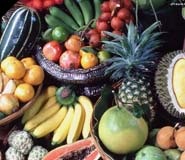
Using concentrated apple juice would be more like using refined sugar than using fresh apple juice would be. Obviously, the less refined a product, the more nutrient dense it will be, which means refined fruit juice concentrate would not be as good a choice as unrefined fruit juice or fresh fruit. When substituting fruit juice concentrate for sugar, use 2/3 cup of the concentrate for each cup of sugar and reduce the liquid in the recipe by one-third cup for each cup of fruit juice sweetener used. Reducing the oven temperature by 25Ëš is recommended as well.
Mashed or pureed whole fruits make a healthier option, because they contain one-third complex sugar rather than the simple sugar of fruit juice concentrates. Applesauce can be used to replace oil in quick breads as well as to add sweetness. A prune puree may be made by presoaking 2 2/3 cups of pitted prunes and combining it in a food processor with one cup of hot water (this mixture may be refrigerated up to one month). In addition to fresh fruit purees, chopped dried fruit, cooked fruit sauces and butters as well as “fruit only” preserves may be used to add sweetness to foods and baked goods.
Final Thoughts
The main idea of using any of these and other natural sweeteners is to avoid refined, processed sugars that are comprised primarily of sucrose, which not only lacks the nutrients needed for its metabolism but also robs needed nutrients from our bodies. Even though some of the natural sweeteners we have looked at do not raise blood sugar levels nearly as much as sugar, many still do cause insulin to spike in the body and should be avoided as much as possible.
Since it is extremely difficult to avoid sweets altogether, these natural alternatives can provide healthier options provided they are used infrequently and in small amounts. In other words, just because you can make something taste good and sweet with a natural sweetener does not necessarily mean it is beneficial to the health of your body to have as much as you desire, nor does it mean such consumption will be without consequences.
Next month, we will conclude our discussion of sweeteners by sharing some practical tips and tasty ways to eliminate much of the sugar from our diets, taken from Ann Gittleman’s book “Get the Sugar Out – 501 Simple Ways to Cut the Sugar Out of Any Diet”.
Copyright © 2008-2015 Lucinda Bedogne, CNHP, CNC
Post Your Comment...
|
|
||||||||||||


